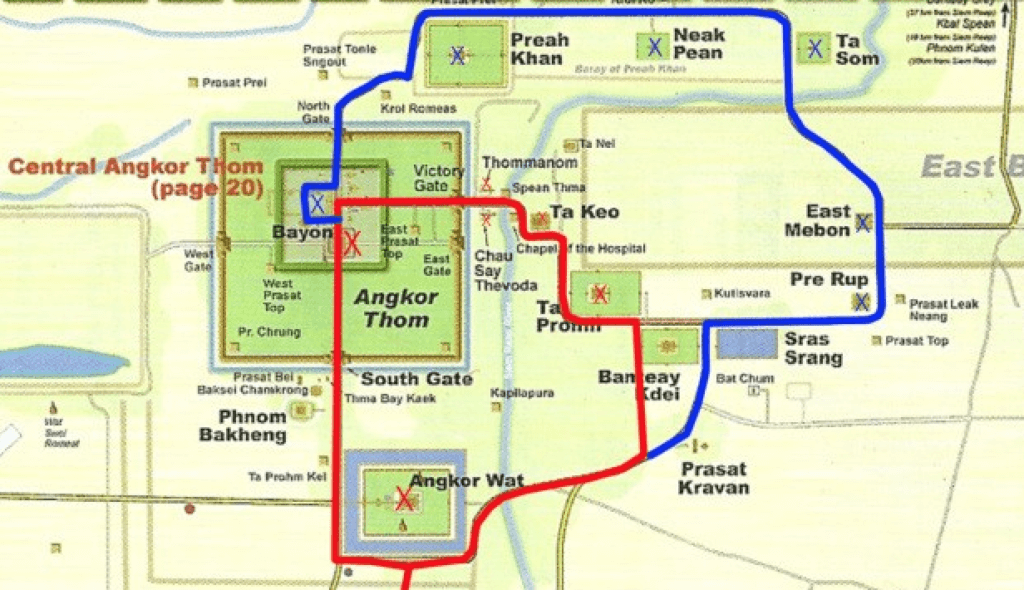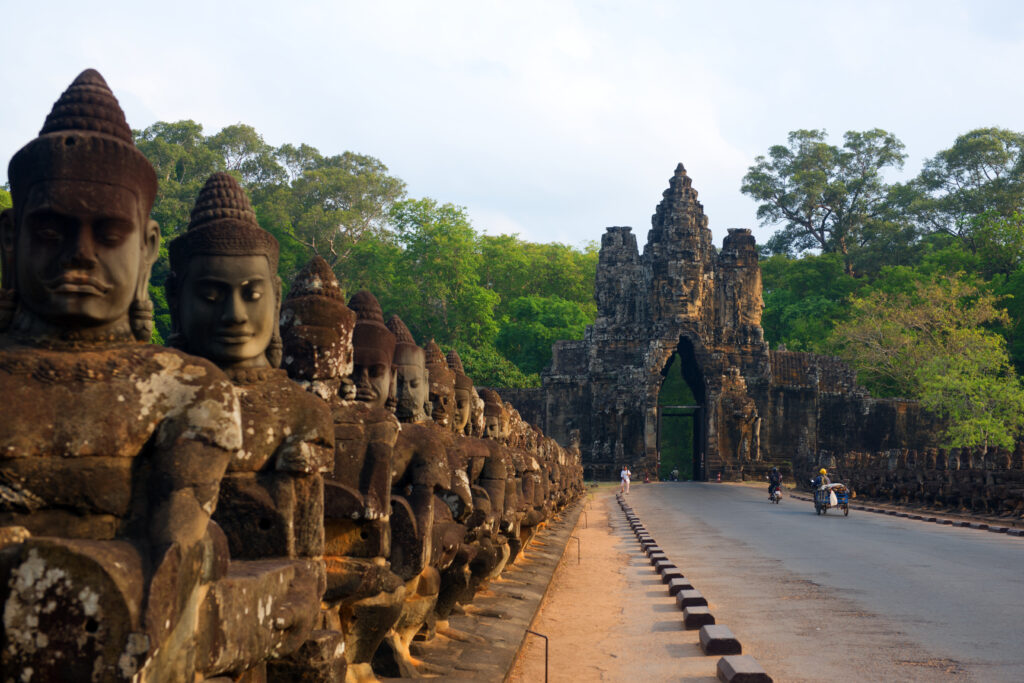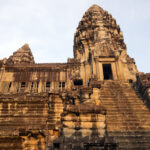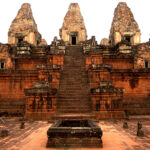April 7, 2025
Letters from Indochina (Part 8)
By Simon J. Lau

Before heading back into the park, I realized I had only scratched the surface of the Small Circuit. It turns out the Small Circuit is actually pretty big! There was no way I’d have time to even think about the Grand Circuit today. That said, below are some highlights from this visit.

I started the morning at Angkor Thom South Gate, one of the most iconic entrances to the ancient city. It’s flanked by stone statues of gods and demons lining the bridge, pulling on a serpent in a symbolic tug-of-war. Beside the gate is a lake, where I paused to watch the sun rise over the water before continuing into Angkor.

Just beyond the South Gate is Bayon, one of the “happiest” temples in the entire complex. It’s known for its many towers, each carved with massive, serene faces that smile down from every angle. Despite the growing heat and humidity, the faces added an unexpected sense of humor to the trip, calmly grinning as if they knew something I didn’t.

I also visited Baphuon, a massive, tiered temple that actually predates Angkor Wat. It was probably the most physically demanding stop of the day. The stairs were almost vertical, and since I was hauling camera gear, climbing up, and especially down, was a real challenge. At one point, I saw a middle-aged British woman descending the stairs backward, like she was climbing down a ladder. She moved surprisingly fast, so I gave it a try. Another brilliant idea by the British!

Although, my favorite temple of the day was Ta Prohm, made famous by the Tomb Raider series. What sets it apart is the way nature has reclaimed it. Giant tree roots wrap around the crumbling stone walls, almost as if the jungle is slowly pulling it back in. This likely began after Thai forces invaded and sacked Angkor in the 15th century, leading to the gradual abandonment of the area by the Khmer Empire.

The Angkor region remained largely forgotten until the late 19th century, when French explorers “rediscovered” it while Cambodia was under French colonial rule. The French eventually negotiated with Thailand to return Angkor to Cambodia in 1907, restoring the temples to Khmer control and beginning decades of archaeological restoration.

After a long, hot day in the park, I rewarded myself with a large, sizzling plate of hand-pulled noodles. The noodles were good, but honestly, the sauce was even better. I liked it so much I asked for a bowl of rice just so I could soak up every last drop left on my plate. So good!




Comments are closed.